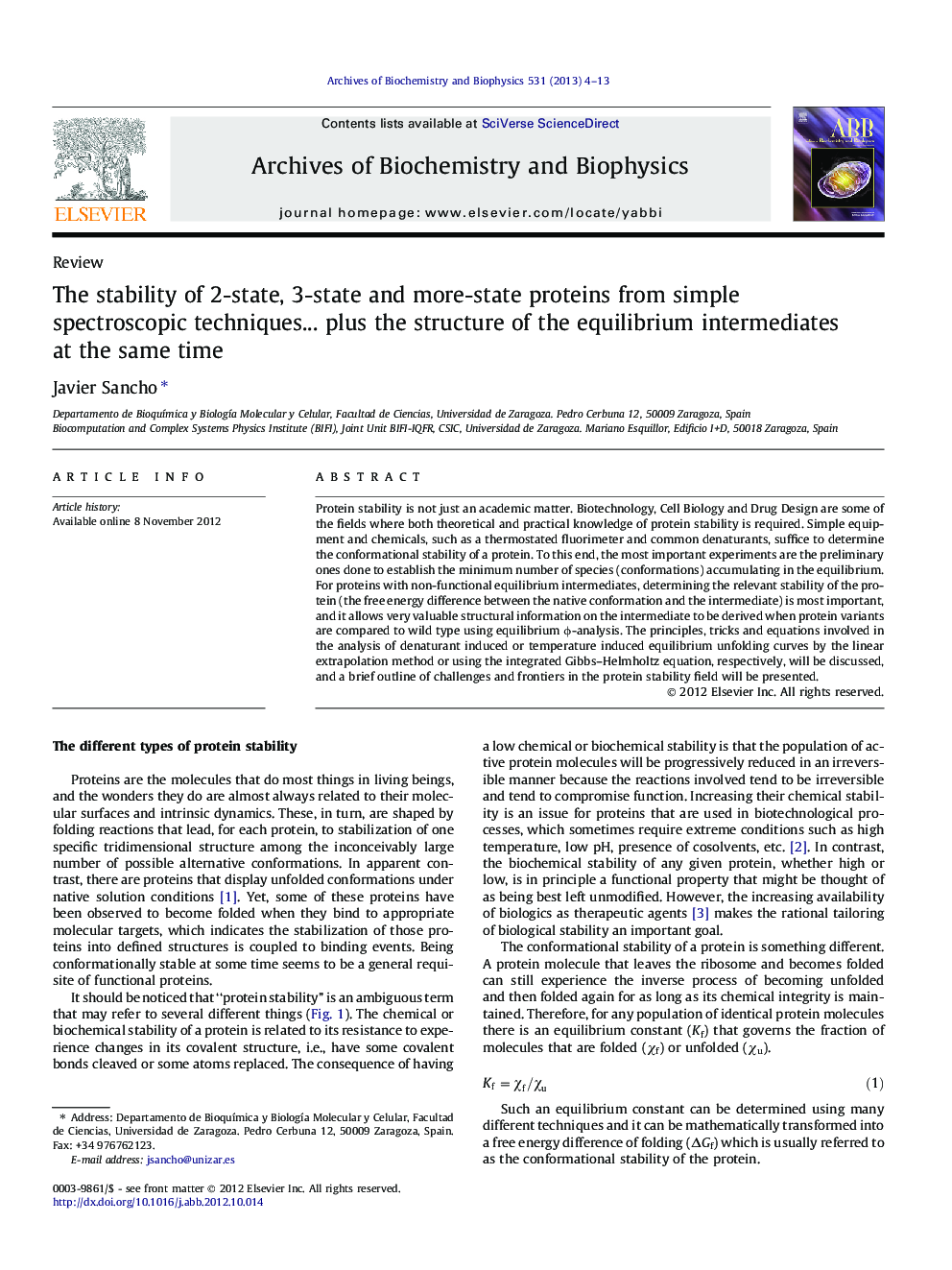| Article ID | Journal | Published Year | Pages | File Type |
|---|---|---|---|---|
| 1925395 | Archives of Biochemistry and Biophysics | 2013 | 10 Pages |
Protein stability is not just an academic matter. Biotechnology, Cell Biology and Drug Design are some of the fields where both theoretical and practical knowledge of protein stability is required. Simple equipment and chemicals, such as a thermostated fluorimeter and common denaturants, suffice to determine the conformational stability of a protein. To this end, the most important experiments are the preliminary ones done to establish the minimum number of species (conformations) accumulating in the equilibrium. For proteins with non-functional equilibrium intermediates, determining the relevant stability of the protein (the free energy difference between the native conformation and the intermediate) is most important, and it allows very valuable structural information on the intermediate to be derived when protein variants are compared to wild type using equilibrium ϕ-analysis. The principles, tricks and equations involved in the analysis of denaturant induced or temperature induced equilibrium unfolding curves by the linear extrapolation method or using the integrated Gibbs–Helmholtz equation, respectively, will be discussed, and a brief outline of challenges and frontiers in the protein stability field will be presented.
Graphical abstractFigure optionsDownload full-size imageDownload high-quality image (52 K)Download as PowerPoint slideHighlights► Proteins display conformational, kinetic, biochemical or mechanic stability. ► Conformational stability is important for cell function and drug discovery. ► Protein stability can be easily determined with very simple equipment. ► For proteins with intermediates there is a “relevant” conformational stability. ► Equilibrium ϕ-analysis links protein stability with the structure of intermediates.
